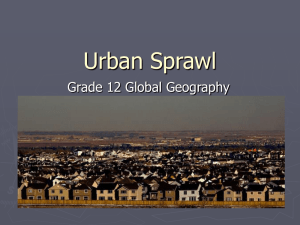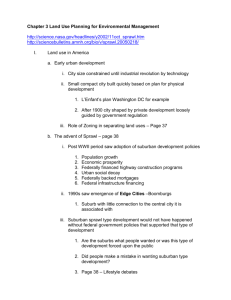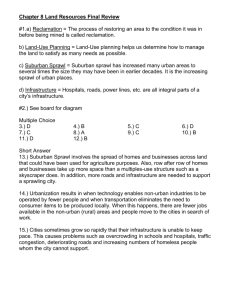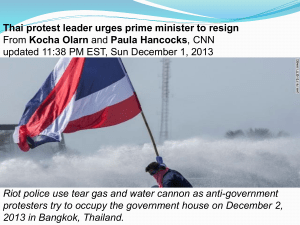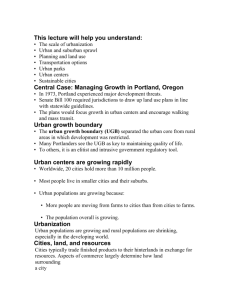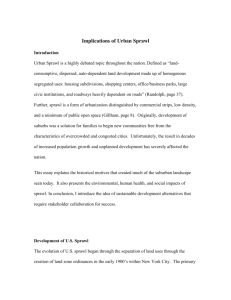Study Guide: Understanding Urban Living, Recreation, and Open
advertisement
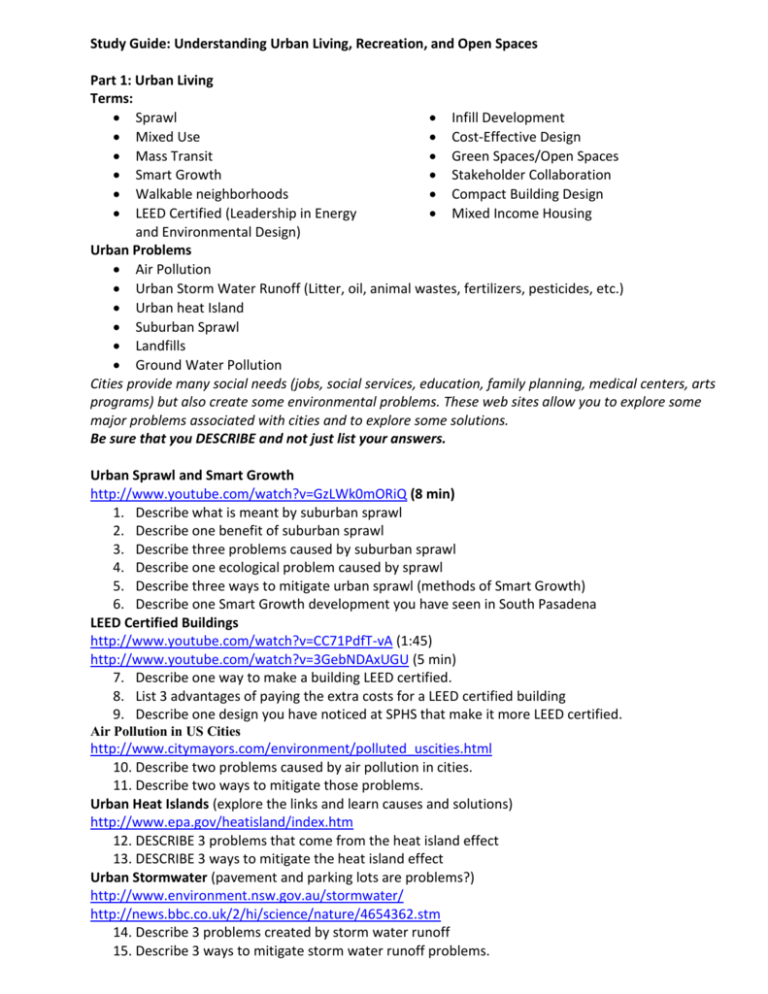
Study Guide: Understanding Urban Living, Recreation, and Open Spaces Part 1: Urban Living Terms: Sprawl Infill Development Mixed Use Cost-Effective Design Mass Transit Green Spaces/Open Spaces Smart Growth Stakeholder Collaboration Walkable neighborhoods Compact Building Design LEED Certified (Leadership in Energy Mixed Income Housing and Environmental Design) Urban Problems Air Pollution Urban Storm Water Runoff (Litter, oil, animal wastes, fertilizers, pesticides, etc.) Urban heat Island Suburban Sprawl Landfills Ground Water Pollution Cities provide many social needs (jobs, social services, education, family planning, medical centers, arts programs) but also create some environmental problems. These web sites allow you to explore some major problems associated with cities and to explore some solutions. Be sure that you DESCRIBE and not just list your answers. Urban Sprawl and Smart Growth http://www.youtube.com/watch?v=GzLWk0mORiQ (8 min) 1. Describe what is meant by suburban sprawl 2. Describe one benefit of suburban sprawl 3. Describe three problems caused by suburban sprawl 4. Describe one ecological problem caused by sprawl 5. Describe three ways to mitigate urban sprawl (methods of Smart Growth) 6. Describe one Smart Growth development you have seen in South Pasadena LEED Certified Buildings http://www.youtube.com/watch?v=CC71PdfT-vA (1:45) http://www.youtube.com/watch?v=3GebNDAxUGU (5 min) 7. Describe one way to make a building LEED certified. 8. List 3 advantages of paying the extra costs for a LEED certified building 9. Describe one design you have noticed at SPHS that make it more LEED certified. Air Pollution in US Cities http://www.citymayors.com/environment/polluted_uscities.html 10. Describe two problems caused by air pollution in cities. 11. Describe two ways to mitigate those problems. Urban Heat Islands (explore the links and learn causes and solutions) http://www.epa.gov/heatisland/index.htm 12. DESCRIBE 3 problems that come from the heat island effect 13. DESCRIBE 3 ways to mitigate the heat island effect Urban Stormwater (pavement and parking lots are problems?) http://www.environment.nsw.gov.au/stormwater/ http://news.bbc.co.uk/2/hi/science/nature/4654362.stm 14. Describe 3 problems created by storm water runoff 15. Describe 3 ways to mitigate storm water runoff problems. Part 2: Recreational Impacts Terms: Leave No Trace Types of Recreation Off Road Vehicles Shooting Ranges Hunting Fishing Hiking Boating (motorized, sailing, canoeing, kayaking) Car Access (Roads, Parking, Restrooms, Concessions, Lodging, Fuel) Reservoirs Skiing Climbing Cycling Caving/ Spelunking Use the following links to answer questions below. http://www.anvilgear.com/jason/backpacking/theenvironmentalImpactofoutdoorrecreation.ht m#Visual%20Impact Discussion of Mitigations for all types of recreational impact on the environment http://www.extension.umn.edu/distribution/naturalresources/components/DD6946e.html 16. Describe 3 ecological harms caused by recreation 17. Describe 3 ways to mitigate the problems caused by recreation. 18 19 20 21 22 23 Part 3. Managing Open Spaces Terms: Wilderness Act Restoration Antiquities Act Parks US Forest Service Nature Preserves Bureau of Land Management Extinction National Park Service Extirpation Preservation Monumentalism Use the following link and others you can find to answer the following questions. http://nemo.udel.edu/manual/Chap4WebRv.pdf 18. Describe 3 Benefits provided by open spaces 19. Describe 3 problems created by open space parks and nature preserves. 20. Describe 3 ways to mitigate those problems. 21. -23. Match the following Manages public lands for public use like preservation, hunting, Wilderness Act A recreation, mining, forestry and livestock grazing. Antiquities Act B Manages public forests Manages and preserves public lands set aside for preservation US Forest Service C but allows certain developments and roads to improve public access. Bureau of Land Management D The law used to establish National Parks The effort to preserve land because it is unique and National Park Service E spectacular. Monumentalism F Protects areas from development, including roads.
